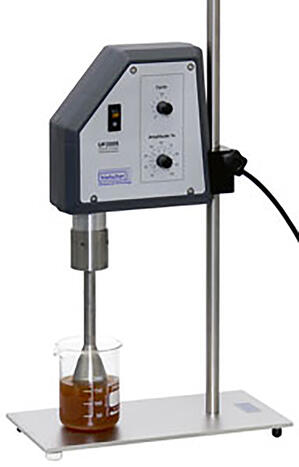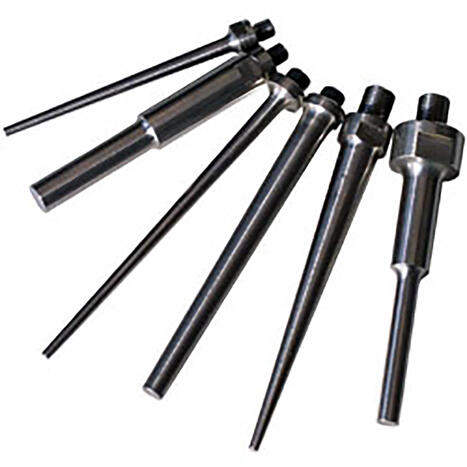UDS 751 Ultrasonic Desintegrator
Ultrasonic Desintegrator UDS 751 for dispersing solutions, emulsions and suspensions by focused ultrasonic
download
product sheet 751Benefits
- compact design and high efficiency (> 90%)
- easy to operate, high steadyness
- different types of sonotrodes available
Applications
- preparation of suspensions, dispersion of particle systems
- desintegration of cells (cell lyse), bacteria, viruses and tissues for medical and biological applications
- support of wet sieving
- homogenisation of mixtures
- accelleration of chemical reactions
- modulation of crystal structures
The ultrasonic disintegrator consists of a high-frequency generator, a transducer and a sonotrodes screwed to the transducer. The high-frequency generator converts the 50 Hz mains voltage into a 24 kHz high frequency voltage. The electrical energy is converted by the transducer into mechanical, vertical vibrations of the same frequency. The sonotrodes screwed to the transducer, which are designed as lambda/2 transducers and are made of highly elastic titanium alloys, amplify the vertical vibrations and transmit the ultrasonic energy with extremely high power densities into the liquids via their end faces. The resulting cavitation enables the wide range of applications to be solved in biology, medicine, chemistry, technology and other fields of application.
| Parameter title | Unit | Value |
|---|---|---|
| purpose of use | - | ultrasonic dispersion and homogenisation of suspensions |
| setting parameter | - | diameter of sonotride | amplitude |
| setting range | - | (1, 2, 3, 5, 14, 40) mm diameter of sonotrode | 20 ... 100 % (amplitude) |
| setting resolution | - | stepwise (diameter of sonotrode) | continously adjustable (amplitude) |
| power supply | - | 240 V AC, 48 ... 63 Hz (optional 115 V AC, 48 ... 63 Hz) |
| dimensions (w × h × d) | mm | 100 × 300 × 210 |
| weight | kg | max. 2,35 |
- Ullmann C., Babick F. and Stintz M. Microfiltration of Submicron-Sized and Nano-Sized Suspensions for Particle Size Determination by Dynamic Light Scattering Nanomaterials 9 (2019) 6,
dx.doi.org/10.3390/nano9060829 - Retamal Marín R. R., Babick F., Lindner G.-G., Wiemann M. and Stintz M. Effects of Sample Preparation on Particle Size Distributions of Different Types of Silica in Suspensions. Nanomaterials 8 (2018) 7,
dx.doi.org/10.3390/nano8070454 - Ullmann C., Babick F., Koeber R. and Stintz M. Performance of analytical centrifugation for the particle size analysis of real-world materials Powder Technol. 319 (2017) 0, 261 - 270
dx.doi.org/10.1016/j.powtec.2017.06.057 - Le H. N., Babick F., Kühn K., Nguyen M. T., Stintz M. and Cuniberti G. Impact of ultrasonic dispersion on the photocatalytic activity of titania aggregates. Beilstein J. Nanotechnol. 6 (2015) 0, 2423 - 2430
dx.doi.org/10.3762/bjnano.6.250 - Meißner T., Oelschlägel K. and Potthoff A. Implications of the stability behavior of zinc oxide nanoparticles for toxicological studies International Nano Letters 4 (2014) 116,
dx.doi.org/10.1007/s40089-014-0116-5

